Peugeot 508 PSE review: a fast and flawed future classic
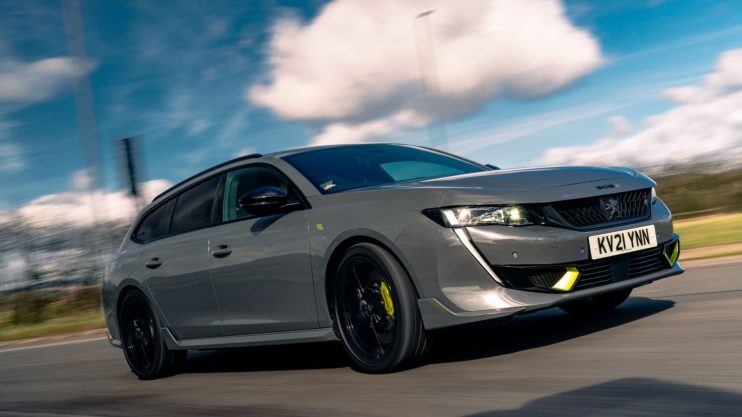
French hot hatchbacks often soar to great heights. French luxury cars often sink without trace. As the most powerful and most expensive Peugeot ever sold, the 508 Peugeot Sport Engineered (PSE) desperately needs to grow wings.
So, how powerful? Try 355hp from a four-cylinder petrol engine and two electric motors, one driving each axle. That’s three times the output of the fabled 205 GTI, and good for 62mph in 5.2 seconds. Top speed is electronically capped at 155mph.
And, erm, how much? Well, the 508 PSE saloon (‘Fastback’ in Peugeot-speak) costs £53,995, while the SW estate driven here is £55,795. Even on finance, that’s around £845 a month over three years. Sacré bleu.
Lion to Le Mans
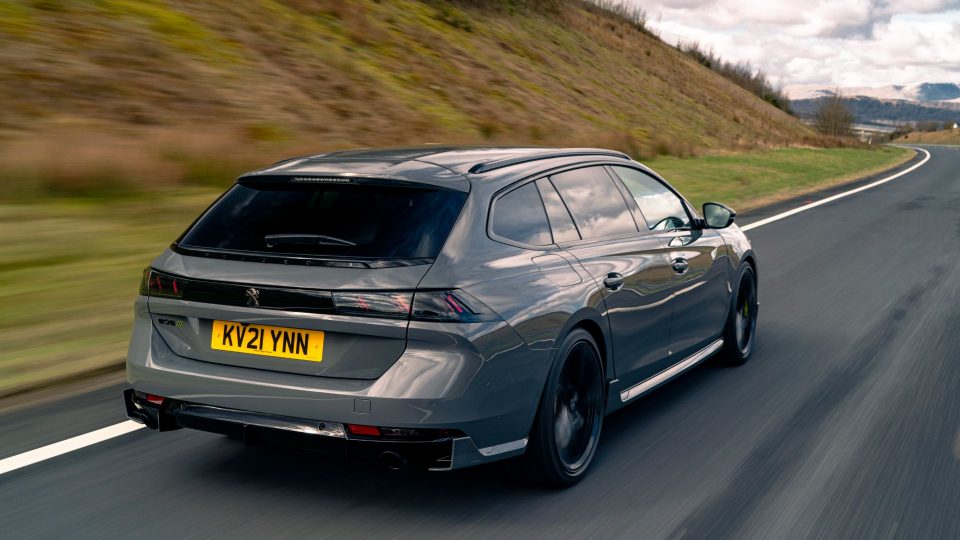
PSE is Peugeot’s new sporting sub-brand, spearheaded by the 9X8 hypercar that races at Le Mans next year. Its three-striped ‘Kryptonite’ green logo is designed to resemble claw-marks slashed into the paintwork.
In time, the PSE badge will be applied to hot hatchbacks – a sportier version of the electric e-208 is strongly rumoured – but the 508 is a trailblazer. Peugeot describes it as a ‘halo car’, designed to turn heads and create a buzz, rather than boost the bottom line.
After a week with the 508 SW PSE, judging by reactions on the street and social media, it seems like a mission accomplished. Affection for hot Peugeots is alive and well, apparently, and everyone wants a closer look. Unlike its under-the-radar rivals (Peugeot points to the Audi S4 and BMW M340i), it won’t pass unnoticed.
Shades of grey
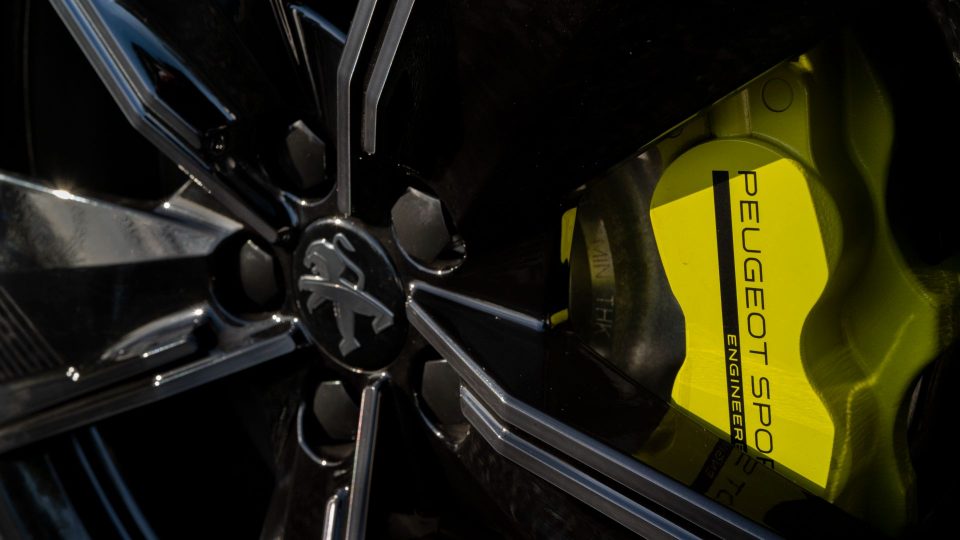
The 508 was already a handsome car, but this version dials up the drama – especially in no-cost Selenium Grey, seen here. It’s one of only three paint colours offered, along with Pearl White (£725) and Perla Nera Black (£575).
Parked among its humbler cousins on my suburban street (I live behind a Peugeot main dealer), the 508 seems to bristle with latent aggression. Diamond-cut 20-inch alloys fill its wheelarches and pointy winglets jut from its sills. The ‘lion’s claw’ rear lights, which strobe Knight Rider-style when you click the key fob, also make me smile.
If anything, the flagship 508 looks even cooler as an estate car, and Peugeot expects most buyers to plump for the SW’s added practicality. Boot space measures 530 litres to the parcel shelf, versus 467 litres in the saloon, but fold the rear seats and you’ll be the envy of Ikea’s car park.
Rich and paw
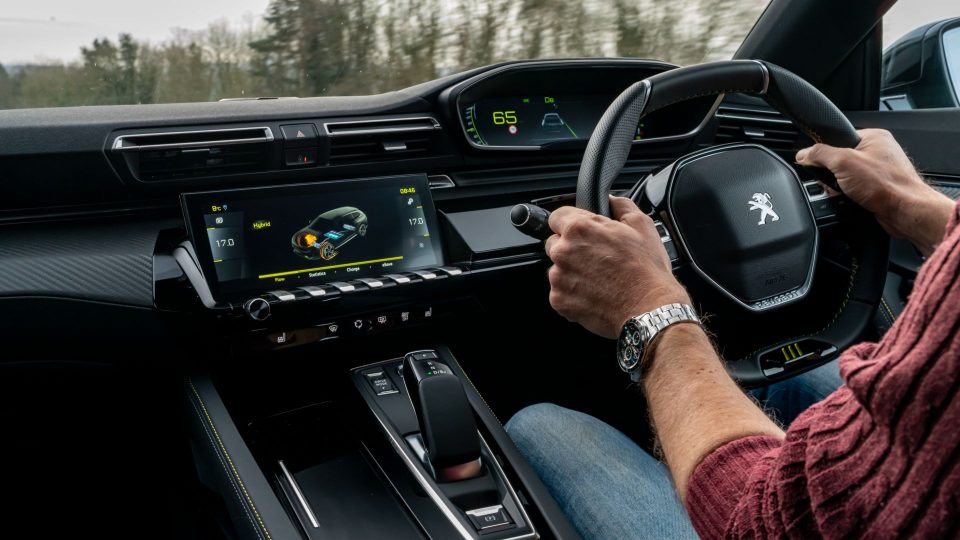
Inside, the 508 is more of a mixed bag. Its dashboard has flourishes of French flair and quality feels good enough to challenge the Germans. But Peugeot’s now-familiar i-Cockpit, with its small steering wheel and high-mounted dials, won’t suit everyone. My modest 5ft 8in frame fitted fine; taller drivers seem to struggle.
The 10-inch central touchscreen is also rather clunky and long-winded, even if you use the neat ‘piano key’ shortcut switches. All too often, it takes multiple finger-prods to achieve what a physical button or dial could do with one.
Get settled, though, and the Nappa leather chairs are very comfortable, and come with a standard massage function. Just avoid the ‘cat’s paw’ setting, which feels like being repeatedly kneed in the back by an impatient passenger.
Taking care of tax
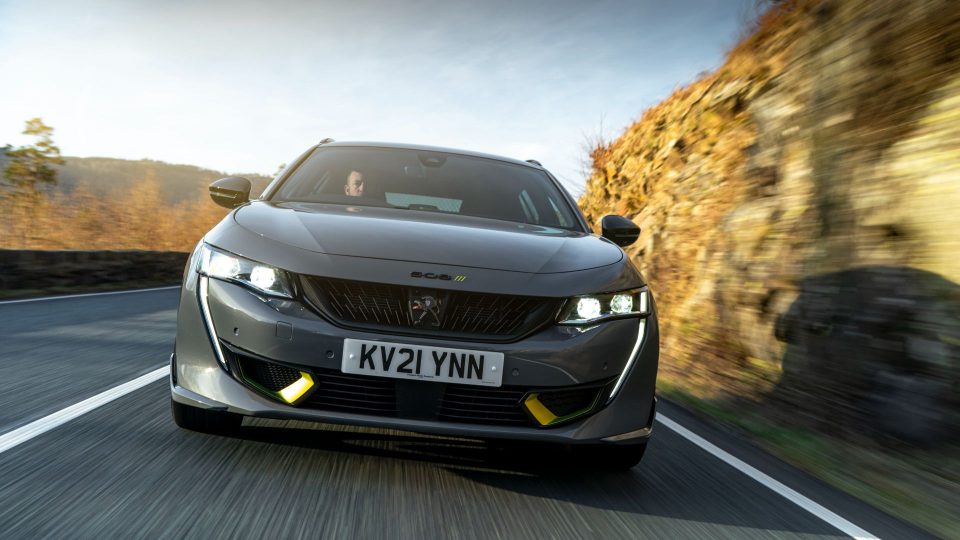
Press the start button and the car defaults to electric mode, giving you a theoretical 26 miles of EV range. It’s not especially quick, with only half the powertrain hauling the 508’s 1,875kg heft, but it is silent and emissions-free.
More pertinently perhaps, it allows Peugeot to game the WLTP fuel economy test and, if you’re a company car driver, slash your BiK tax bill. The official, not-very-realistic figures are 138.9mpg and 46g/km, meaning BiK rates from just 12 percent.
Want the car to feel more ‘PSE’? Then switch into one of the other drive modes: Comfort, Hybrid, Sport or 4WD. All call upon the 1.6-litre turbocharged engine to varying degrees, and align the gearbox and chassis settings to suit. That said, the full 355hp wallop is only served up in Sport mode.
Point and pivot
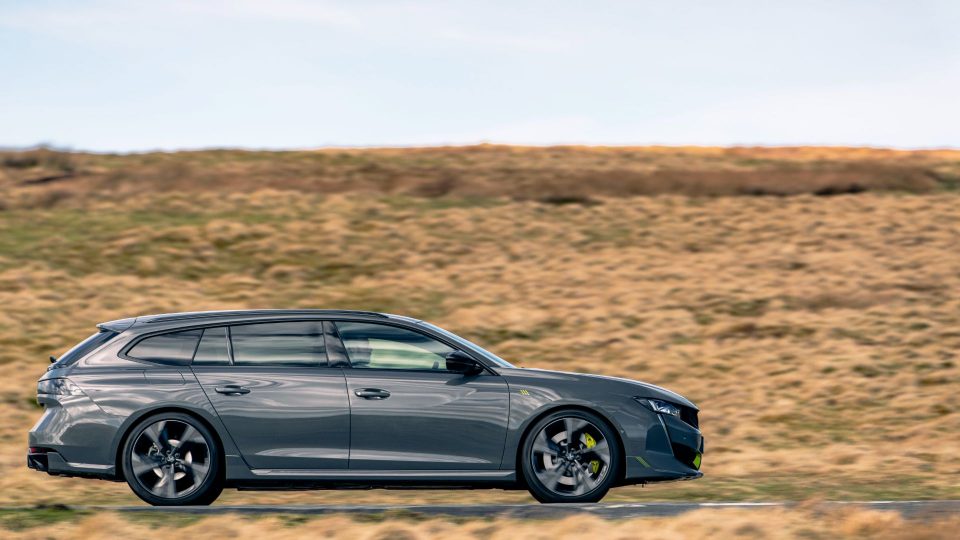
With both power sources working in sync, the 508 feels genuinely rapid. Its combination of instant electric torque and high-revving power delivers a seamless shove in the back (the opposite of a cat’s paw massage, in fact).
Apart from in electric-only mode, the majority of drive goes to the front wheels. This gives the PSE a different character to rear-biased rivals such as the M340i. It feels pointy and eager, pivoting around bends like a classic Peugeot hot hatch. But it’s also less fluid and throttle-adjustable than the benchmark BMW.
The main issue for me centres around Sport mode. Being a gung-ho motoring journalist (and former custodian of several Peugeot hot hatches), I wanted all the power, all the time. Unfortunately, this means the eight-speed gearbox clinging belligerently to every ratio, even when it should short-shift, plus a ride that’s simply too brittle for British roads.
I ended up dialling things back to Hybrid and enjoying its smoother, more relaxed gait, which feels counter-intuitive in a car of this type. Perhaps I’m just getting old.
Classic in the making
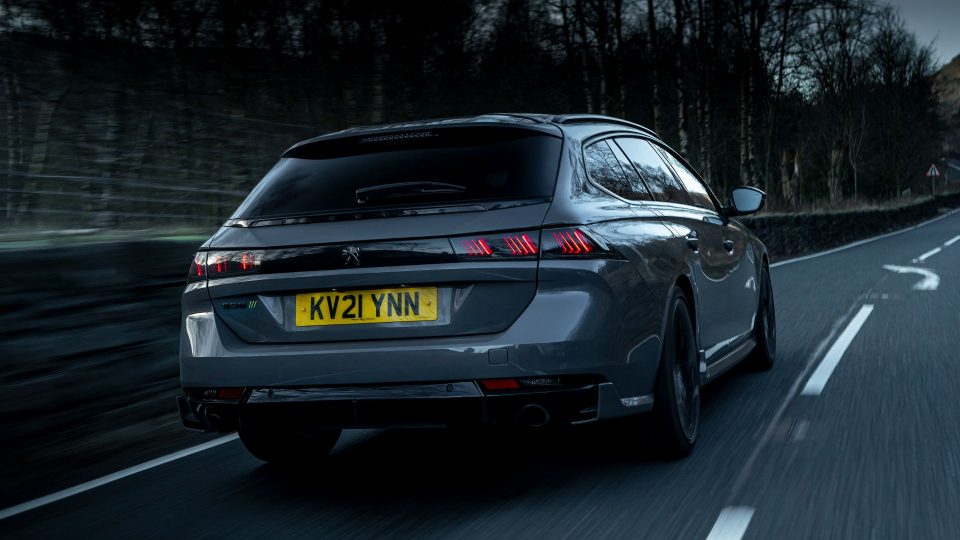
Despite my misgivings, there’s much to enjoy about the 508 PSE. It looks fantastic, is interesting and fun to drive in equal measure, and its rarity makes you feel part of a select and rather special club.
Rarity? Yep, it’s safe to assume this priciest of Peugeots won’t become an everyday sight. The pull of a premium badge is strong in this country, and depreciation will be steep. Buy one in a few years’ time, though, and you’ll bag a surefire future classic.
Above all, this car is important for what it represents: Peugeot, the brand that produced so many seminal driver’s cars, getting serious about sportiness again. If future, more affordable PSE-badged models can build on the 508’s strengths, there’s much to look forward to. In the meantime, roll on Le Mans 2022.
Tim Pitt writes for Motoring Research
PRICE: £55,795 (£58,295)
POWER: 355hp
0-62MPH: 5.2 seconds
TOP SPEED: 155mph
WEIGHT: 1,875kg
Fuel economy: 138.9 mpg
CO2: 46 g/km
Battery capacity: 11.5 kWh
Electric range: 26 miles